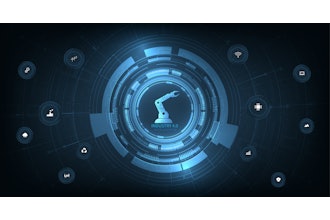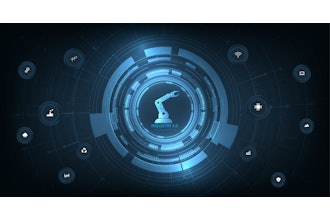
Logistics marketplace software connects logistics service providers and their customers, facilitating transactions and communication between parties. Companies and entrepreneurs launching their own logistics marketplaces can generate millions of dollars in annual revenue, which such companies as SeaRates, SpaceFill, and Lobb have demonstrated.
However, managing a logistics marketplace can be challenging in terms of cybersecurity. Marketplaces store vast volumes of personal and corporate data, which makes them a lucrative cybercrime target. In the transportation industry, the average cost of a data breach reached $4.18 million by 2023, according to IBM.
As a logistics software company, Itransition considers malware, DDoS, and social engineering attacks the most severe cyber threats for marketplaces. This article delves into these cybersecurity challenges and shares four security practices to address them effectively.
The Biggest Cyber Threats for 2024
- Malware. Malware is any malicious program that aims to penetrate a marketplace’s defense and infect its code. In the event of a successful attack, a hacker can install a crypto-mining script into a website, steal or delete user data, or take complete control of a marketplace. According to the recent Nuspire's report, malware activity increased by 88.97 percent in the last quarter of 2023. Ransomware is one of the most common and, at the same time, dangerous malware types. Such a program can disrupt the marketplace’s normal functioning (by encrypting user data) until the owner pays.
- DoS\DDoS. The Denial of Service (DoS) attack involves sending many network requests to a marketplace to disrupt its functioning and make it unavailable to users. Distributed Denial of Service (DDoS) is a more sophisticated DoS attack carried out from multiple computing devices simultaneously, making it more devastating. Every year, DDoS attacks grow exponentially in their size and complexity. In August 2023, Google's DDoS Response Team detected and mitigated the largest DDoS campaign throughout its observation history – this attack peaked above 398 million requests per second.
- Social engineering. Unlike malware and DDoS, social engineering attacks target marketplace users, internal (marketplace employees) and external customers and logistics service providers). For instance, malefactors can use such methods as pretexting, baiting, or phishing to make an employee share confidential data. APWG states there were 1,077,501 phishing attacks only in Q4 of 2023.
The Solutions
There is no universal solution to completely protect a marketplace from malware, DDoS, and social engineering attacks. However, marketplace owners can reduce cyber risks to a minimum by implementing the following practices:
- Designing secure marketplace architecture. A solution's architecture largely determines the efficiency of logistics marketplace security. Developers can eliminate many potential vulnerabilities by prioritizing security when designing the architecture and defining how its individual components (i.e., database and UI) interact. For instance, developers can implement user input validation and sanitization mechanisms, which can help protect the marketplace's UI, server, or database from malicious code injections.
Also, developers can implement various authentication mechanisms, such as multi-factor authentication (MFA) or token authentication, to prevent DoS and DDoS attacks. Integrating a role-based access control (RBAC) authorization model into marketplace security is yet another way to minimize potential risks. This method implies assigning roles (i.e., "owner," "administrator," or "automation team member") to individual marketplace users to minimize the risk of unauthorized access to sensitive data, thus reducing the potential attack's surface.
To reduce cyber risks, decision-makers can also consider implementing a distributed architecture based on microservices that operate independently and communicate via APIs. The microservices architecture allows developers to isolate various components and functions of a marketplace, which helps mitigate the risk of compromising the entire system in the event of a successful attack.
- Implementing continuous cybersecurity monitoring. Any atypical event occurring within a software system or network can signal a potential threat. By checking security events (for instance, failed login attempts) received from various sources, marketplace administrators can identify DDoS, malware, or other types of attacks and eliminate them faster. Here, intrusion detection systems (IDS) and security information and event management (SIEM) tools can be helpful. An IDS detects malicious activity and transmits data to SIEM, which systematizes and visualizes information about anomalous security events. Using these two tools together, security administrators can not only address data breaches in real-time but also investigate their root causes to prevent similar attacks in the future.
- Providing employee training and education. If a marketplace employee cannot recognize a social engineering attack, they can neither report nor prevent it. Corporate education and training for new and existing employees can increase company cybersecurity awareness, thereby reducing the likelihood of a successful attack. A typical security course consists of several parts. First, employees attend online or offline seminars and study theory. Then, they participate in practical training to solidify the acquired knowledge and form everyday cybersecurity habits. Finally, employees should pass the exam to prove they have mastered the material. A trainer might use a post-training quiz or simulate a phishing attack to assess employee awareness. Those who fail the test may need to take the training once again.
- Running comprehensive marketplace security audits. Security is not a one-time task, as hackers discover new vulnerabilities and invent new attack types daily. Continuous assessment of marketplace security is one of the ways to protect against these evolving threats. A security audit is used for analyzing various marketplace infrastructure components (such as databases, UI, and physical servers) and includes steps such as document analysis, vulnerability testing, and log analysis. Although a comprehensive security audit can be resource-intensive, we recommend marketplace IT teams conduct it at least twice a year.
Malware, DDoS, and social engineering attacks are some of the most common cyber threats that can harm a marketplace business. Fortunately, business owners can mitigate these cyber threats in advance by defining proper solution architecture, providing employee training, and running recurring security audits.






















